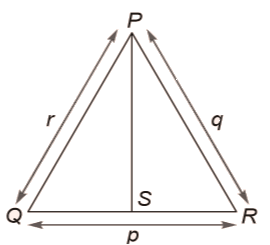GATE-CS-2015 (Set 2)
Question 3
Based on the given statements, select the most appropriate option to solve the given question. What will be the total weight of 10 poles each of same weight?
Statements:
(I) One fourth of the weight of a pole is 5 kg
(II) The total weight of these poles is 160 kg more
than the total weight of two poles.
Question 4
Consider a function f(x) = 1 – |x| on –1 ≤ x ≤ 1. The value of x at which the function attains a maximum and the maximum value of the function are:
Question 5
A generic term that includes various items of clothing such as a skirt, a pair of trousers and a shirt is
Question 6
If the list of letters, P, R, S, T, U is an arithmetic sequence, which of the following are also in arithmetic sequence?
1. 2P, 2R, 2S, 2T, 2U
2. P–3, R–3, S–3, T–3, U–3
3. P2, R2, S2, T2, U2
Question 7
Four branches of a company are located at M, N, O and P. M is north of N at a distance of 4 km; P is south of O at a distance of 2 km; N is southeast of O by 1 km. What is the distance between M and P in km?
Question 8
Question 9
If p, q, r, s are distinct integers such that:
f(p, q, r, s) = max (p, q, r, s)
g(p, q, r, s) = min (p, q, r, s)
h(p, q, r, s) = remainder of (p × q) / (r × s) if (p × q) > (r × s) OR
remainder of (r × s) / (p × q) if (r × s) > (p × q)
Also a function fgh (p, q, r, s) =
f(p, q, r, s) × g(p, q, r, s) × h(p, q, r, s).
Also the same operation are valid with two variable functions
of the form f(p, q).
What is the value of fg(h(2, 5, 7, 3), 4, 6, 8)?
Question 10
Out of the following four sentences, select the most suitable sentence with respect to grammar and usage:
There are 63 questions to complete.
Last Updated :
Take a part in the ongoing discussion

